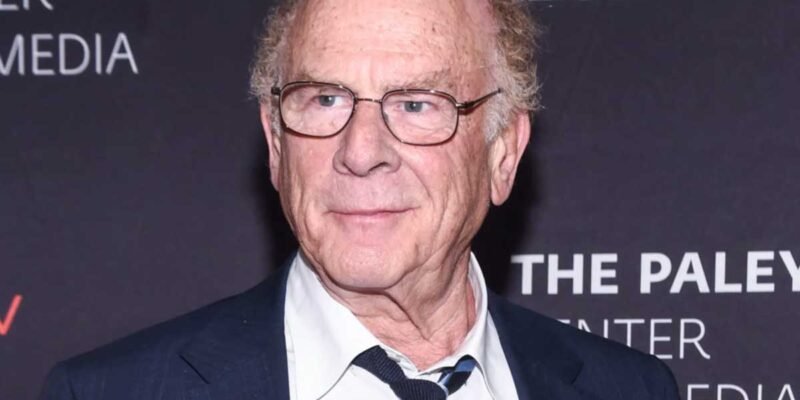The Voice Behind Timeless Classics
That unmistakable voice you hear drifting through “The Sound of Silence” belongs to one of music’s most enduring talents. Art Garfunkel, with his signature curly hair and ethereal vocals, has been captivating listeners for over sixty years as half of the iconic duo Simon & Garfunkel.
But there’s more to this story than just beautiful music. The net worth of Art Garfunkel tells a fascinating tale of artistic success meeting smart financial decisions. From growing up in Queens to amassing a fortune worth $95 million, Garfunkel’s wealth journey is as remarkable as his musical legacy.
What makes his story particularly interesting? Unlike many musicians who see their fortunes rise and fall with changing trends, Garfunkel has built something lasting. His wealth continues growing decades after his biggest hits topped the charts.
Art Garfunkel’s Current Net Worth in 2025
So exactly how much is Art Garfunkel worth today? Current estimates place the net worth of Art Garfunkel at $95 million as of 2025. This figure comes from reliable sources like Celebrity Net Worth and Finance Monthly, who track celebrity finances.
That’s pretty impressive for someone whose biggest commercial success happened in the 1960s and 70s. While you might find some sources citing lower numbers – anywhere from $45 million to $75 million – the most recent analyses consistently land around that $95 million mark.
Here’s what makes this even more remarkable: Garfunkel hasn’t released a major album in years. Many artists today need constant touring and new releases just to stay financially afloat. Yet his wealth keeps growing steadily.
The secret? Diversified income and careful money management. Instead of the wild financial swings many entertainers experience, Garfunkel has maintained consistent growth year after year.
The Simon & Garfunkel Era: Building the Foundation
Everything started with Paul Simon. Their partnership as Simon & Garfunkel became the foundation for Art Garfunkel’s impressive net worth. Sure, they began as “Tom & Jerry” back in high school during the 1950s, but the real money came when they reunited as Simon & Garfunkel in the 1960s.
“The Sound of Silence” changed everything in 1965. That song didn’t just top the charts – it opened doors to album deals that would eventually sell over 100 million copies worldwide. Those sales created royalty streams that still pay out today.
But the real goldmine? “Bridge Over Troubled Water” from 1970. This album alone sold over 25 million copies and won two Grammy Awards. More importantly, it created income that’s been flowing for over fifty years. The title track gets covered constantly, licensed for movies and commercials, and generates serious royalty checks.
During their peak years, touring brought in serious money too. Garfunkel was reportedly earning around $4 million annually from tours, with some individual tours grossing over $30 million. Their 1984 Central Park reunion concert drew more than 500,000 people – proof that their appeal never really faded.
Don’t forget “The Graduate” soundtrack either. “Mrs. Robinson” became a cultural phenomenon and continues earning licensing fees whenever it appears in films, TV shows, or advertisements. That single song has probably contributed millions to Garfunkel’s wealth over the decades.
Solo Career Success and Earnings
When Simon & Garfunkel split in 1970, many people wondered if Art could make it on his own. Turns out, he absolutely could. His solo career added significantly to his overall net worth, even if it never quite reached the commercial heights of the duo.
His first solo album, “Angel Clare” in 1973, hit number 5 on the charts and earned about $650,000. That might not sound like much today, but it was substantial money in the early 70s. More importantly, it proved he could succeed independently.
“Breakaway” in 1975 became his biggest solo success, generating around $1.5 million in earnings. The hit single “I Only Have Eyes For You” became a radio favorite and still earns royalties today. Interestingly, the album also featured “My Little Town,” written by Paul Simon – showing their collaboration could still make money even when they weren’t officially together.
His other solo albums kept the money flowing throughout the 70s and 80s. “Watermark” brought in $650,000, “Fate For Breakfast” earned $350,000, and even later releases like “Scissors Cut” ($1.2 million) and “Across America” ($450,000) contributed meaningfully to his growing wealth.
Solo touring proved quite profitable too. His tours typically generated $2-3 million each. Unlike artists who need elaborate stage shows, Garfunkel’s concerts focused on his voice, keeping costs low and profits high.
He also tried acting, appearing in films like “Catch-22” and “Carnal Knowledge.” While never his main focus, these roles provided extra income and kept him in the public eye between musical projects.
Ongoing Revenue Streams and Royalties
Here’s where Art Garfunkel’s financial story gets really interesting. Long after his commercial peak, his music keeps generating substantial income. We’re talking about an estimated $1.5 million annually just from ongoing royalties and licensing.
Streaming platforms have given classic Simon & Garfunkel tracks new life. Songs like “The Sound of Silence,” “Mrs. Robinson,” and “Bridge Over Troubled Water” consistently rank among the most-streamed folk-rock tracks on Spotify, Apple Music, and YouTube Music. Each stream means money in Garfunkel’s pocket.
The licensing market has been particularly lucrative. “The Boxer” and “Mrs. Robinson” remain popular choices for movie soundtracks, TV shows, and commercials. Each licensing deal can generate anywhere from tens of thousands to hundreds of thousands of dollars, depending on how prominently the song is featured.
Many fans don’t realize Garfunkel also earned money from backing vocals for other artists. His work with musicians like James Taylor and Carly Simon created additional revenue streams that have provided steady income over the decades.
Cover versions create another significant income source. When artists like Disturbed or Johnny Cash record new versions of Simon & Garfunkel classics, Garfunkel receives songwriter royalties. These covers often introduce the songs to new audiences and generate substantial payments.
International markets contribute significantly too. His music remains popular worldwide, especially in Europe and Asia, where licensing deals and performance royalties continue generating income. This global appeal helps protect his earnings from fluctuations in any single market.
Smart Investments and Business Ventures
Musical talent created Art Garfunkel’s initial wealth, but smart financial decisions have been crucial in growing his fortune to $95 million. Unlike many entertainers who struggle with money management, Garfunkel has shown remarkable business sense throughout his career.
Real estate forms the cornerstone of his investment strategy. His property portfolio, worth approximately $7.5 million, includes a beautiful $4.5 million home in Connecticut. This peaceful property reflects his love of nature while appreciating significantly in value over the years.
His New York City property, valued around $3 million, sits in a historic neighborhood that aligns with his passion for art and literature. This strategic location has provided both personal enjoyment and solid financial returns as New York real estate values have consistently risen.
Garfunkel’s approach to luxury purchases shows his conservative financial philosophy. Rather than flashy displays of wealth, he makes thoughtful acquisitions that retain or increase value. His vintage Jaguar XJ6, worth about $70,000, exemplifies this approach – a classic vehicle that appreciates over time while reflecting his taste for timeless style.
Some reports suggest he’s ventured into business investments, including a vodka brand called “Pure Wondergarfunkel” and a fashion line named “Art Garfunkel Seduction.” While details remain limited, these ventures show his willingness to diversify income sources beyond music.
His investment philosophy prioritizes stability over high-risk opportunities. This conservative approach has helped him avoid the financial pitfalls that have affected many contemporaries in the music industry. Instead of chasing quick profits, Garfunkel has focused on building long-term wealth through steady, reliable investments.
Lifestyle and Spending Habits
Art Garfunkel’s approach to wealth reflects his thoughtful personality. Unlike many celebrities who flaunt their riches through extravagant purchases, Garfunkel maintains a relatively modest lifestyle that has helped preserve his $95 million fortune.
His spending patterns reveal someone who values experiences over material possessions. Garfunkel reportedly spends about $500,000 annually on travel and philanthropic activities. While substantial, this represents a conservative percentage of his overall wealth and shows financial discipline.
His passion for walking has led to some significant personal expenditures. He’s completed long-distance walks across Japan and the United States – investments in personal fulfillment that align with his philosophical nature. These journeys provide material for his poetry and personal reflection, showing how he integrates spending with artistic pursuits.
Philanthropic efforts focus primarily on music education and literary arts, causes close to his heart. While specific donation amounts aren’t public, his commitment to these areas represents a meaningful portion of his annual spending. This giving pattern reflects his belief in nurturing the next generation of artists.
Unlike many wealthy entertainers, Garfunkel avoids typical celebrity excess. No yachts, private jets, or multiple luxury homes around the world. Instead, his spending focuses on quality over quantity – fewer but more meaningful purchases that align with his values.
His approach to entertainment and dining reflects this philosophy too. Rather than expensive celebrity hotspots, Garfunkel prefers intimate settings that allow for meaningful conversation and genuine connection. This preference saves money while aligning with his personality and artistic sensibilities.
Comparing Art Garfunkel’s Wealth to Other Folk Icons
To really appreciate Art Garfunkel’s $95 million net worth, it helps to see how his wealth compares to other folk and rock musicians from his era. This comparison reveals not only his financial success but also the unique factors behind his wealth preservation and growth.
Paul Simon, his longtime partner and occasional rival, has an estimated net worth of about $150 million. While Simon’s wealth exceeds Garfunkel’s, this difference makes sense given Simon’s role as the primary songwriter, which generates higher royalty percentages. Simon has also maintained a more active touring and recording schedule throughout his solo career.
Compared to other 1960s folk icons, Garfunkel’s wealth stands out significantly. Bob Dylan, often considered the most influential folk musician of the era, has an estimated net worth around $200 million, though much came from his 2020 song catalog sale to Universal Music Group for a reported $400 million. Before that sale, Dylan’s net worth was much closer to Garfunkel’s current level.
Joni Mitchell, another folk legend from the same era, has an estimated net worth of approximately $100 million, placing her in a similar financial category to Garfunkel. Like Garfunkel, Mitchell has benefited from enduring popularity of her classic songs and smart financial management.
The comparison becomes even more favorable when looking at other duo partnerships from the era. Surviving members of groups like The Mamas & The Papas or Peter, Paul and Mary generally have significantly lower net worths, often in the $10-30 million range. This disparity highlights the exceptional commercial success of Simon & Garfunkel and the lasting value of their musical catalog.
What sets Garfunkel apart from many contemporaries is the consistency of his wealth accumulation. While some artists experienced dramatic financial swings due to poor business decisions, substance abuse issues, or changing musical tastes, Garfunkel has maintained steady financial growth through conservative management and diversified income streams.
Legacy Beyond the Numbers
The net worth of Art Garfunkel, at an impressive $95 million, represents far more than financial accumulation. It tells the story of an artist who successfully transformed musical talent into lasting wealth while maintaining artistic integrity and personal values throughout a career spanning more than six decades.
Garfunkel’s financial journey offers valuable lessons for both artists and investors. His success demonstrates the power of creating timeless content that continues generating revenue long after its initial release. The songs he recorded with Paul Simon in the 1960s and 1970s continue earning substantial royalties today, proving that quality artistry can be the foundation of enduring financial success.
Perhaps most remarkably, Garfunkel has achieved this wealth without compromising his artistic vision or personal principles. He never chased commercial trends or diluted his musical style to appeal to changing tastes. Instead, he remained true to his artistic vision while making smart financial decisions that preserved and grew his wealth over time.
His conservative approach to spending and investment has protected him from financial disasters that have befallen many entertainers. By focusing on real estate, avoiding excessive luxury purchases, and maintaining diversified income streams, Garfunkel has built a financial foundation that should sustain him throughout his lifetime and beyond.
Looking forward, Art Garfunkel’s net worth seems likely to continue growing. The timeless appeal of Simon & Garfunkel’s music ensures ongoing royalty income, while his real estate investments should continue appreciating. His legacy in music is secure, and his financial legacy appears equally solid.
In an industry known for financial volatility and career uncertainty, Art Garfunkel stands as an example of how artistic excellence, combined with financial wisdom, can create lasting prosperity. His $95 million net worth isn’t just a number – it’s a testament to the enduring value of great music and smart money management.
















